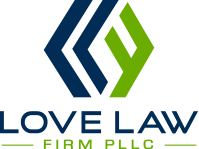
Small business owners often do not have risk mitigation and safe personnel, or human resource personnel, to help plan for emergency situations. Here are some basic steps that a small business owner can take to help mitigate risk and ensure continuity, and the survival of the business, when an unanticipated disaster strikes.
Personnel Planning: The Key to Organizational Stability
Government officials in your area will undoubtedly play a major role in the local emergency and disaster response process; however, those individuals and affiliated agencies will be mainly focused on the public’s wellbeing writ large as opposed to protecting your business’ valuable assets and the sustainability of your ongoing operations. That fact makes it important for companies to be adequately prepared to handle periods of economic or civil turbulence by developing and implementing comprehensive plans to maintain internal stability in an emergency.
An important component of this planning phase should include outlining the distribution of resources and how employees may be allocated to compensate for last-minute vacancies attributable to sickness, casualty or travel impediments. The team also needs to highlight necessary cross-training requirements so the organization’s workforce is competent in performing alternate or additional tasks should the situation dictate.
Businesses evolve with time, meaning that all emergency and disaster protocol must be regularly updated to remain effective. Additionally, contingency planning often involves maintaining contact information for external emergency assistance entities (e.g., fire department, police or governmental officials). These outside organizations also undergo staffing and organizational shifts that you should remain aware of and make necessary updates.
Disaster & Emergency Planning Basics
The U.S. Department of Homeland Security (DHS) and the Federal Emergency Management Agency (FEMA) suggest that businesses take the following five actions when planning for emergency and disaster management:
- Program Management: A corporate readiness initiative should clearly articulate achievable goals, explicitly state the roles and responsibilities of each employee and identify the executives responsible for developing and maintaining continual emergency and disaster preparedness.
- Planning: A sequential game plan for dealing with emergency situations necessitates a recognition of potential hazards and a subsequent assessment of how likely these scenarios are to occur. Contingency planning should prioritize handling issues that are most probable to occur.
- Implementation: Businesses should then implement an emergency response program that incorporates each of the following aspects:
-
- Planning for Closures: Small businesses need to account for possible worksite closures. Locations that remain operational during disaster settings need to factor in lodging plans for displaced workers, resource management and transportation logistics.
- Workforce Categorization: At the onset of any emergency situation, the business owner should have a method of categorizing employees: employees highly impacted/unavailable due to death, property damage or illness; employees with reduced capacity to work due to the emergency; and employees that remain fully operational. The owner should develop protocol for each category to address potential needs/issues.
- Governmental Compliance: The corporate emergency plan should factor in mandatory government reporting obligations to include: the Occupational Safety and Health Act (OSHA); COBRA, state statutes mandating paycheck delivery and Worker Adjustment and Retraining Notification Act (WARN Act) notifications and any other applicable employer guidelines.
- Safety & Security Considerations: Operational sustainability and recovery and emergency plans are integral components of a corporate safety and security initiative. It is important to develop and rehearse emergency evacuation plans and to identify the individuals who are responsible for making determinations on when these protocols are put into action.
- Maintaining Communications: Keeping open lines of communication during emergency events between all staff is essential for mitigating risk. Both internal and external communications can optimize customer loyalty, educate stakeholders on available resources to aid them in times of disaster and ensuring employees are aware of their ongoing responsibilities to sustain operations.
- Testing & Exercises: Regularly testing and updating emergency protocol is important to gauge the practicality of your plan and ensure employees are aware of what to do when an emergency occurs.
- Program Enhancements: Small business owners should continually review and revise emergency and disaster plans to identify gaps and potential liabilities. Updates should be made to accommodate for any new epidemics or changes within the workplace that may necessitate special considerations during an emergency response.
Management Protocol
The role of the business owner is to proactively oversee staffing requirements in an emergency setting. Planning for this responsibility includes developing contingency staffing measures to ensure operability by taking the following considerations into account:
- Essential Employees: Workers should know which roles are deemed essential during an emergency. Essential employees are usually required to be available no matter what the situation is and include health care and public safety employees.
- Modified Work Times: During emergencies, small business owners may need to adjust work schedules, such as implementing part-time shifts, role-sharing or nontraditional working hours.
- Alternative Locations & Remote Working Accommodations: Setting up temporary work locations or integrating telecommuting arrangements can assist the owner in adapting to closures or staffing shortages.
- Paused or Expedited Onboarding: Depending on your company’s sector and operations, you may need to either temporarily halt or speed up your hiring processes. Protocol should be put in place beforehand to facilitate each modality during an emergency.
- Compensation & Benefits: Employers need to ensure that both exempt and nonexempt workers receive the pay and benefits they are entitled to with minimal delay during an emergency. Understand that exempt employees have to be paid for the whole week if they work any percentage of a workweek, even if the office is closed for a period of the week due to an emergency—but if the employee does not work at all during the week the company is not obligated to compensate them. Also note any obligations your company owes workers as part of family and medical leave programs, insurance coverages, hazard pay and unemployment compensation and plan accordingly.
Let Us Help
Does developing a comprehensive emergency and disaster preparedness program for your business seem daunting? That is a totally understandable feeling—there is a myriad of contingencies and factors to take into account. The good news is that LOVE LAW FIRM is here to help you with all of your business’ legal needs, including planning for emergency management. Contact us today to learn more about how our experience and proven track record of success can assist you in accomplishing your objectives.
Francine E. Love is the Founder & Managing Attorney at LOVE LAW FIRM PLLC which dedicates its practice to serving entrepreneurs, start-ups and small businesses. The opinions expressed are those of the author. This article is for general information purposes and is not intended to be and should not be taken as legal advice.

